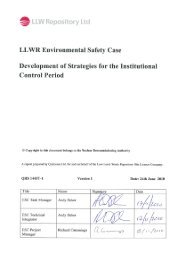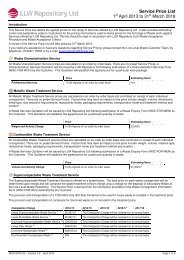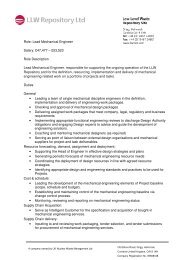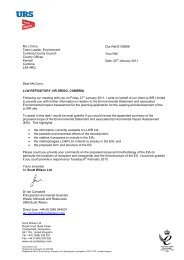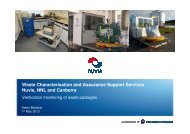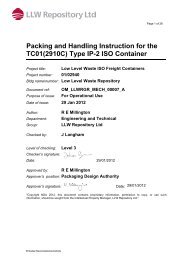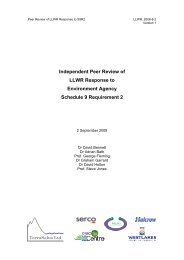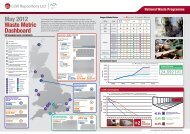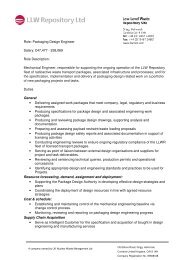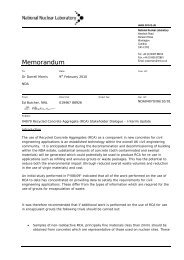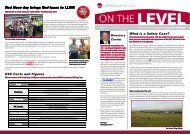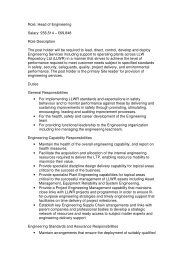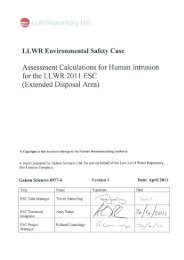Strategic Guidance on the Management of LLW and ILW / LLW ...
Strategic Guidance on the Management of LLW and ILW / LLW ...
Strategic Guidance on the Management of LLW and ILW / LLW ...
Create successful ePaper yourself
Turn your PDF publications into a flip-book with our unique Google optimized e-Paper software.
<strong>LLW</strong> Repository LtdNati<strong>on</strong>al Waste ProgrammeNWP/REP/011Issue 2.1 – Jan 2013Page 26 <strong>of</strong> 585.2.4. Mechanical Surface Dec<strong>on</strong>taminati<strong>on</strong> (Ultra-High Pressure Water Jetting) [Ref. 5,14, 15]Usage<strong>LLW</strong><strong>ILW</strong>/<strong>LLW</strong>Surface c<strong>on</strong>taminatedVolumetricallyc<strong>on</strong>taminatedActivatedAluminiumCopperMild steelMild steel (coated)Stainless steelStainless steel (coated)Descripti<strong>on</strong> <strong>of</strong> techniqueUltra-high pressure (UHP) water jetting is a mechanical dec<strong>on</strong>taminati<strong>on</strong> technique which uses ultra-highpressure water to physically remove c<strong>on</strong>taminati<strong>on</strong> from <strong>the</strong> surface <strong>of</strong> an object. The technique can beapplied manually using h<strong>and</strong>-held apparatus or remotely; ei<strong>the</strong>r in-situ or within closed boxes. UHP waterjetting can be used to remove surface coatings (e.g. paint) from surfaces <strong>and</strong> can be used to remove surfacedeposits without damaging underlying metal surfaces. Dec<strong>on</strong>taminati<strong>on</strong> may be improved through <strong>the</strong> use <strong>of</strong>heated water or <strong>the</strong> additi<strong>on</strong> <strong>of</strong> abrasives, solvents or detergents to <strong>the</strong> water.Outcomes Advantages Disadvantages• For <strong>LLW</strong>:o Waste metal dec<strong>on</strong>taminated to EPRout-<strong>of</strong>-scope status; oro Waste metal dec<strong>on</strong>taminated to enablefur<strong>the</strong>r processing.• For <strong>ILW</strong> / <strong>LLW</strong> cross-boundary waste:o Waste metal dec<strong>on</strong>taminated to EPRout-<strong>of</strong>-scope status; oro Waste metal dec<strong>on</strong>taminated to <strong>LLW</strong>to enable fur<strong>the</strong>r processing ordisposal.• Sec<strong>on</strong>dary wastes include large volume <strong>of</strong>radiologically c<strong>on</strong>taminated aqueous waste(may c<strong>on</strong>tain abrasives, solvents ordetergents if used).A company owned by UK Nuclear Waste <strong>Management</strong> Ltd• Quick <strong>and</strong> relativelysimple.• Applicable to a widerange <strong>of</strong> metals.• Applicable to a widerange <strong>of</strong> radiologicalactivities.• Useful for <strong>the</strong>removal <strong>of</strong> surfacecoatings.• Less useful for complexgeometries whereuniform coverage <strong>of</strong> <strong>the</strong>item may not beattained.• Not useful forvolumetricallyc<strong>on</strong>taminated oractivated metals (unlessas precursor step for<strong>on</strong>ward transfer).• Large volume <strong>of</strong>sec<strong>on</strong>dary wastesgenerated.• Potential for orphansec<strong>on</strong>dary wastegenerati<strong>on</strong>.• Can be dose-intensive ifnot used in automatedc<strong>on</strong>figurati<strong>on</strong>.NOT PROTECTIVELY MARKED



